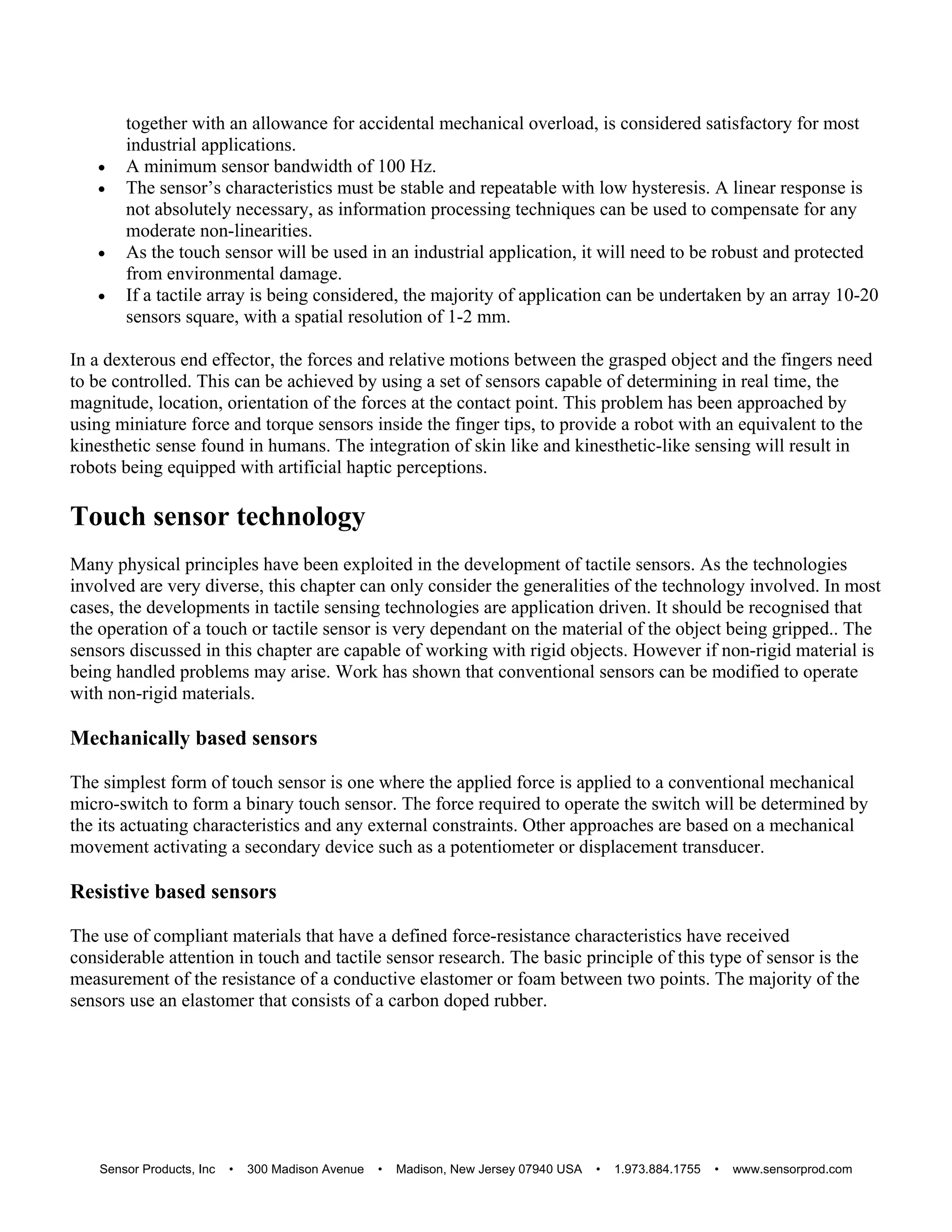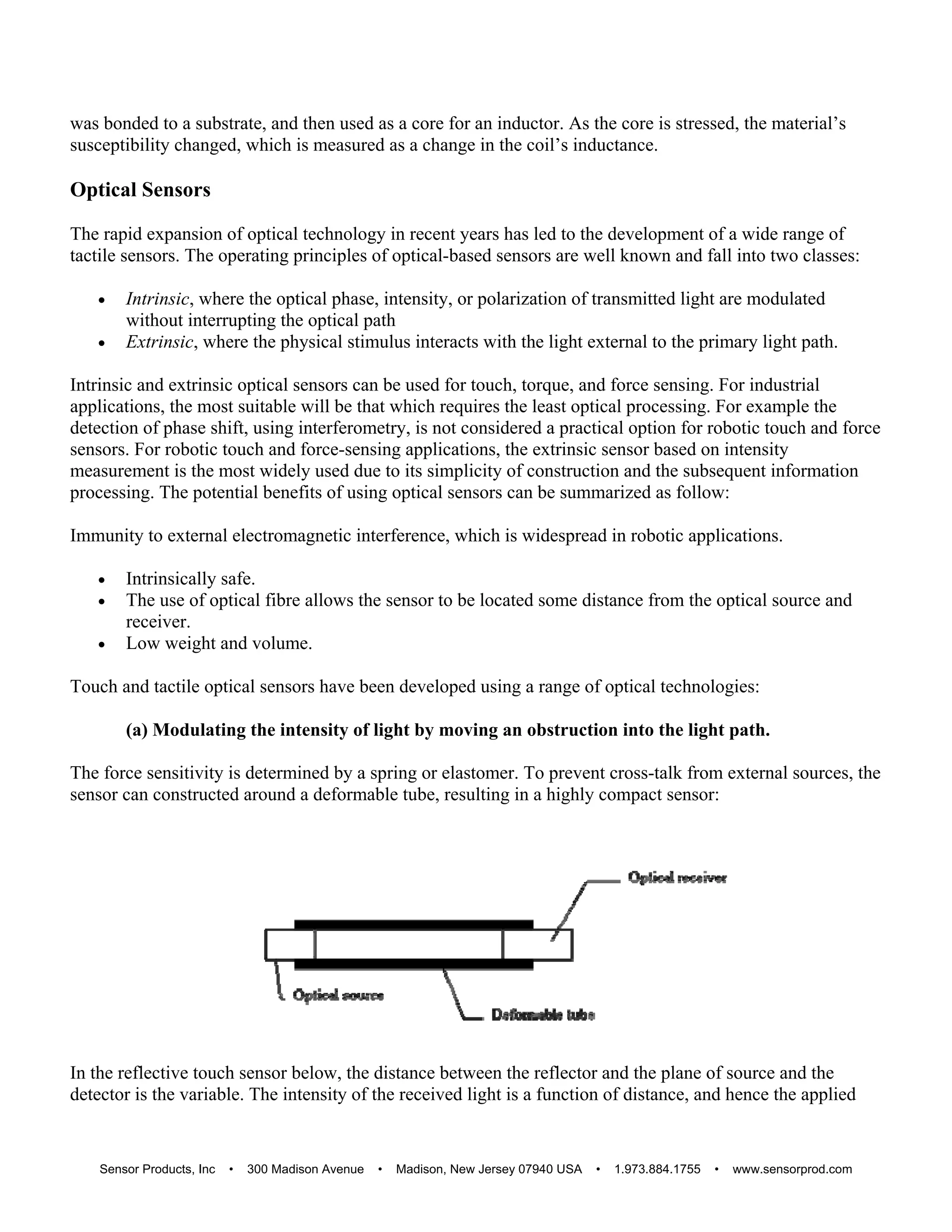Tactile sensing involves devices that measure contact parameters between a sensor and an object, enabling detection of both touch and tactile interactions. Various sensor types are discussed, including mechanical, resistive, capacitive, magnetic, optical, and piezoelectric, each with unique operational principles and applications. The document emphasizes the importance of sensor specifications, robustness, and the integration of various sensing technologies to enhance robotic touch capabilities.









